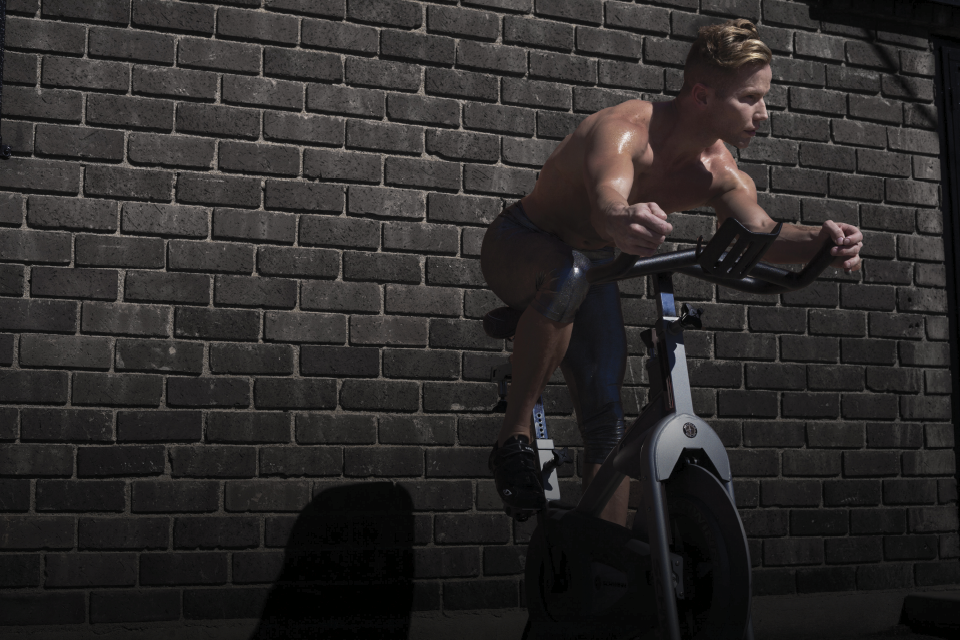6 Mistakes You’re Probably Making in Cycling Class

1. Not enough resistance
Resistance is your friend! The flywheel on a spin bike typically weighs around 40 lbs, so you can imagine once you get enough speed going, the momentum without resistance is pretty intense. While many studios are fans of super fast jogs and drills, without enough resistance the bike is in charge, and you are just along for the ride. Even though spin is low impact, without enough resistance it can become rather jarring to your joints, which is obviously not a good thing. Lastly, if you really want to torch calories and burn fat, the best way to maximize your burn is by cranking it to the right.
2. Riding low
Another way riders turn a low-impact activity into one that’s hard on the joints is by not setting up on the bike correctly. If the saddle is not high enough, it can put pressure on your knees and cause pain. Additionally, it may be harder for you to keep up with the class, as sitting too low can slow you down when changing positions. The best way to get situated is by standing next to your bike and aligning the seat directly at your hips.
3. Hanging on the handlebars
Form and position is paramount in all exercise, and when you’re locked into a stationary bike, any deviations on position become rather obvious. Always remember that the handlebars are meant for balance, not to lean your weight into. By keeping your grip light, you engage even more of your core when out of the saddle, burning up to a third more calories than doing the same exercise seated.
4. Improper positioning
After teaching upwards of 5,000 spin classes, I lost track of how many times I have been asked, “Will this bulk up my thighs?” My answer is always the same: “Not if you’re doing it correctly.” For indoor cycling, our positioning should mimic that of a squat when out of the saddle. Your knee should remain behind the tip of your toe, and your butt should be pulled back over the saddle so that it taps between your thighs. In this position, your glutes become the workhorse, and you avoid any unnecessary pressure on the knee, resulting in a firmer back side, not overdeveloped quads.
5. Ignoring the instructor
Even if it’s your first time ever, your instructor has likely spent lots of time preparing class to give you the best experience possible. Nothing is more irksome than when someone decides to ride to their own beat. Trust in the process, and accept the challenge of doing something new. If you know you have a former injury and might have to modify, or just may need some extra breaks, we understand. Simply let your instructor know ahead of class, and opt for a seat in the back where you won’t distract other riders fighting to stay on the rhythm.
6. Ditching the stretch
Unless your instructor excuses you early, or you’ve let them know you need to leave early for work or a prior engagement, class is not over until after the stretch. You can afford the 4–5 minutes it will take to cool down, and stretching ensures you can continue riding injury free for years to come. Plus, it’s disruptive and just rude to everyone else to leave early, so don’t do it.
Jason Wimberly is not only a celebrity trainer, but is the Founder of his own studio The WALL Fitness (located right off Sunset in Los Angeles.)






